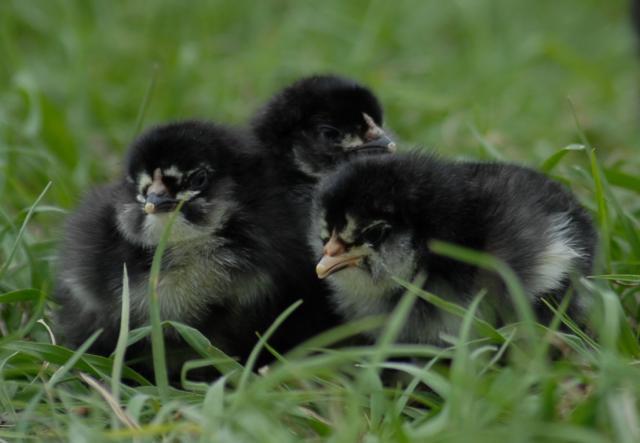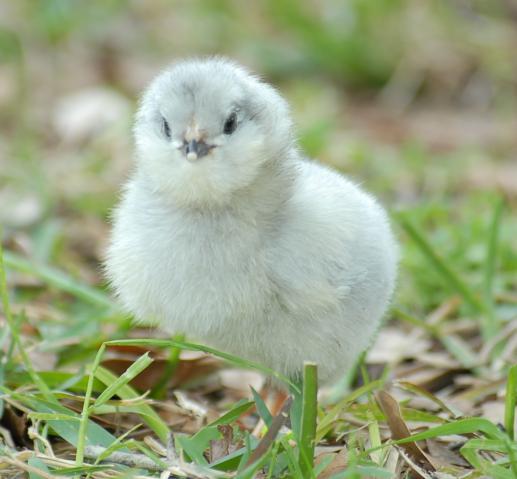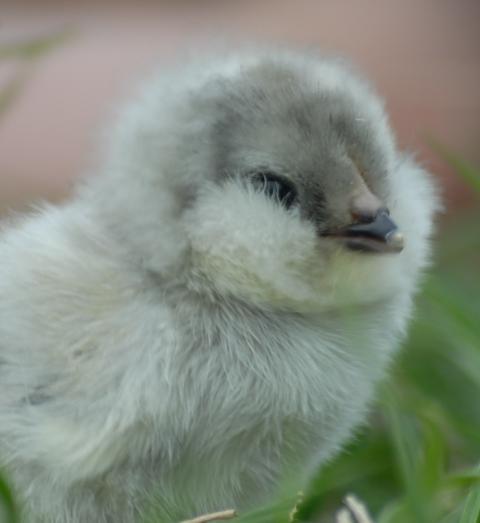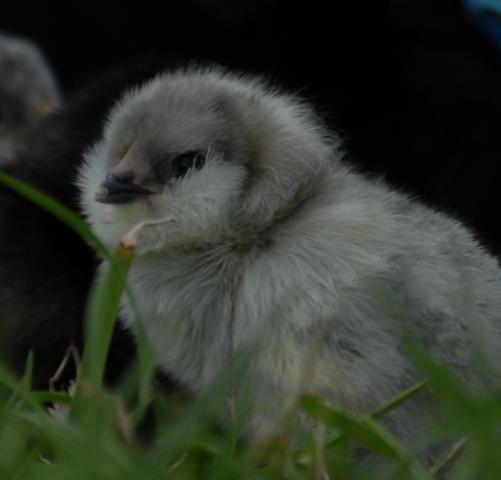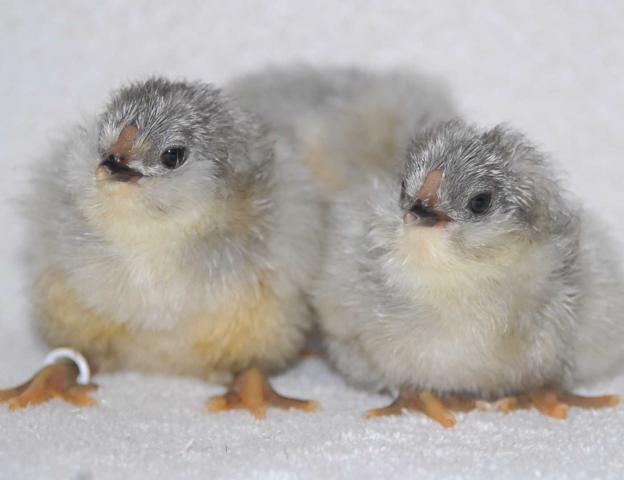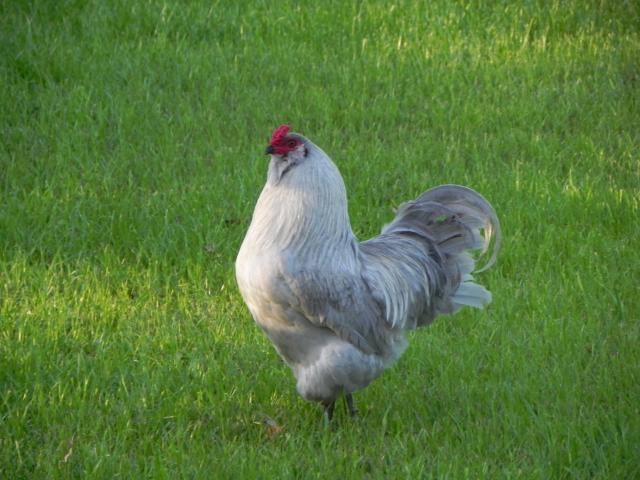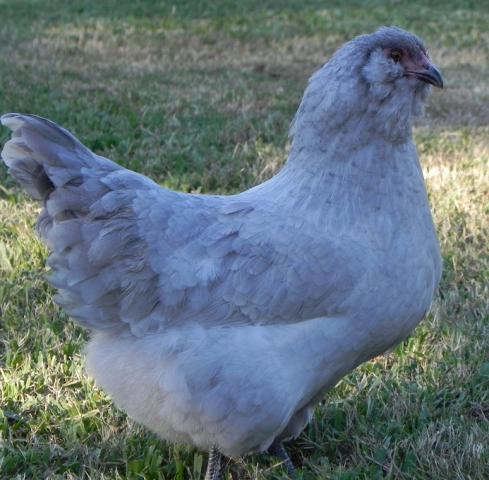I wanted to post some pics of the lavs for MADAMWLF and others who were curious about the color. Sometimes, the shanks of ameraucana chicks CAN appear yellowish on hatch, due to the concentration of the same pigment that gives free-range chicken egg yolks that dark yellow/orange. There is an old thread on the breed club website about this very topic. By a couple of weeks of age, that pigment fades away and you can look at the foot pads and see that the skin is actually white, not yellow. Lavs are a work in progress, as anyone will tell you, and they are not a recognized color variety in either APA or ABA. Sometimes the lav chicks will have yellow down in the face area, in the same places you might normally see yellow down on a black chick (see the pic of the black chicks for reference regarding this). I guess this might include some of the primary wing tip areas, as well. If there is residual white feathers in these areas by the time the bird gets its final plumage, I would consider it a cull. I have not been able to visit this thread very often this spring because I'm working two jobs right now. I hope these pics answer any questions.
First, the black chicks...for reference about where you might see yellow (or silver-y white) down.......
Now, the lavs.....
There is a lot of interest in this color. This variety is not for the faint at heart, in my opinion. You will cull plenty of chicks if you are serious about improving the variety. I hatched lots of chicks this spring and maybe have one or two that are superior to what I started with (maybe). It is so important that blacks continue to be reintroduced back into the lavs until type is established, along with other traits like full muffs/beards, wing carriage, tail carriage, feather quality, eye color, egg color, proper pea comb, etc. The front chick in the first lav group photo is a clean-faced bird, btw.
There is no such thing as a 75% lav bird. You either have lav or you don't. Lav can be carried "hidden" behind (hopefully) black, in what is referred to as a "split". Splits are visually black, but carry a single copy for lav hidden.
lav bred to lav will produce 100% lav all the time; no chipmunk stripes, no mottles, no dark markings.
lav bred to a split will produce 50% lav and more splits (50%), again, carrying that lav gene hidden
lav bred to black produces 100% splits, all visually black and all carrying the lav gene hidden
The tricky combination is split bred to split. This combination produces
25% lav
50% split
25% black and you will not be able to differentiate between the splits and the pure blacks unless you test breed EVERY bird with enough resulting offspring to make an informed analysis. All splits will not have yellow wing tips and anything with a yellow wing tip is not necessarily a split. I know there is some carryover from silkies about the yellow wing tips being associated with a "split".
I hope this information is helpful.






